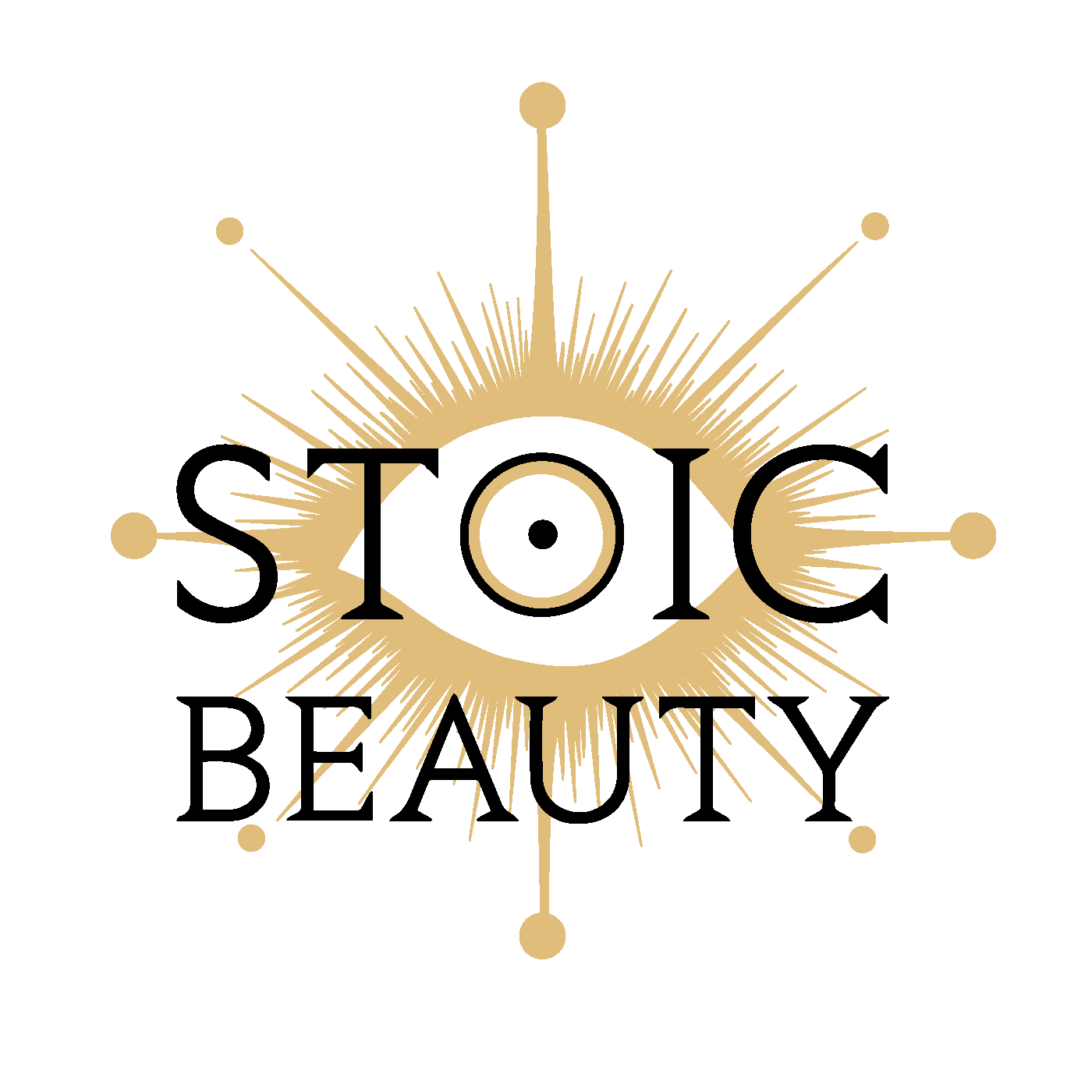
Body Neutrality | Stretch Mark Edition

Growth spurts, weight fluctuation, hormonal changes, pregnancy, and myriad bodily changes can result in stretch marks decorating the body. I first noticed my own stretch marks beginning their life on my chest during puberty. At first I panicked. I was taught to hate them, clearly from a very early age. My older siblings had the same marks, and bought copious amounts of harmful products promising to remove them overnight. Luckily enough for me, nobody seemed to care about my stripes. I forgot my panicked train of thought immediately (in the way that an 11 year old often does) and continued to not think about my stretch marks.
Now that I'm older, I am striking a new balance. I desire to care for my skin, but without the shame and stigma of trying to eliminate all signs of natural body transition. This is why I felt so aligned with the way Stoic Beauty thinks about stretch marks. Stoic considers the stretch mark to be a sign of a body in transformation. Naos Belly Oil incorporates an expert blend of ingredients, including botanical extract Gotu Kola, to prevent the formation of stretch marks by hydrating, nourishing and firming the skin. While stretch marks have been show to be reduced with Gotu Kola, the blend also works to plump and hydrate the skin.
The idea of the stretch mark as a sort of ‘transformative media’ falls under the philosophy of body neutrality.
Body neutrality is the idea that the body should be accepted as it is.
What society deems as ‘flaws’ are simply ‘traits’ of the body. The idea is to de-objectify the human form, therefore de-prioritizing treating natural traits as problems. Some ask “Why not body positivity?” and while the notion of constant positivity towards one's body could seem appealing, body positivity still objectifies the human body as a ranking of worth.
I see my stretch marks through the lens of body neutrality. I don’t despise them, because they do no harm. I also don’t love them, because to my eyes, they provide no visual aesthetic to my chest. The most time-consuming thoughts that I have about these marks match the notion of Stoic Beauty’s statement of ‘bodies in transformation’. My stretch marks are an acknowledgement of the transformations I have gone through, and the stories my body carries as it guides me through life. I do not hate them, and I do not love them, I feel neutrality towards them, and that’s okay.
I am a witness to my own process of becoming.
The act of witnessing our own journey's is starkly in contrast to the performance of our journey through social media.
Often, this space contains countless examples of negativity, body neutrality, body positivity, and toxic positivity.
On one end of the spectrum, negativity tells many to hate their stretch marks. Negativity says “Get rid of your flaws.” This worldview advertises products as a cure for a trait that everyone has. This is the most commonly known form of body shaming on social media, and is extremely damaging to the self images of many.
Body neutrality de-objectifies the idealized body as a ranking of worth. Body neutrality says: “These marks exist as traits on the human body representing transformation.”
Body positivity is a way of considering all traits beautiful. Body positivity says: “Every trait your body holds is beautiful and pleasing.”
A less talked about aspect of social media and body image is toxic positivity. Toxic positivity perpetuates the idea that you must love every part of your body, otherwise you are dishonouring the body and by proxy yourself. Here’s a quick litmus test on differentiating between body positivity, and toxic positivity.
Body positivity encourages you to pull yourself out of negativity towards the direction of positivity
Ex: “Your stretch marks are beautiful.”
Toxic positivity shames you for being within negativity.
Ex: “You shouldn’t hate your stretch marks, they’re beautiful. Don’t get rid of them.”

One artist who honours stretch marks through body neutrality is Spanish artist Cinta Cort Cartró. Cartró is an artist who is well known for her painting of her own stretch marks. This sparked a social media trend of many women painting their own stretch marks in lovely colouring and designs to honour the stretch mark as a transformative media. Cinta Tort Cartró’s work outlines femininity through the lens of body neutrality, dealing with many topics further than stretch marks. You can view her work here.
Stoic Beauty considers the stretch mark a natural trait of the human body. Stretch marks deserve to be honoured in whatever way you chose for your own body. We will not tell you to hate them, then feed you a stigma that shames you towards a product. And we will not tell you to love them, then feed you shaming messages that guilt you away from a product. Stoic Beauty has created Naos Belly Oil for those who want to prevent stretch marks, with an excellent blend of ingredients that hydrate, nourish, and firm the skin.
